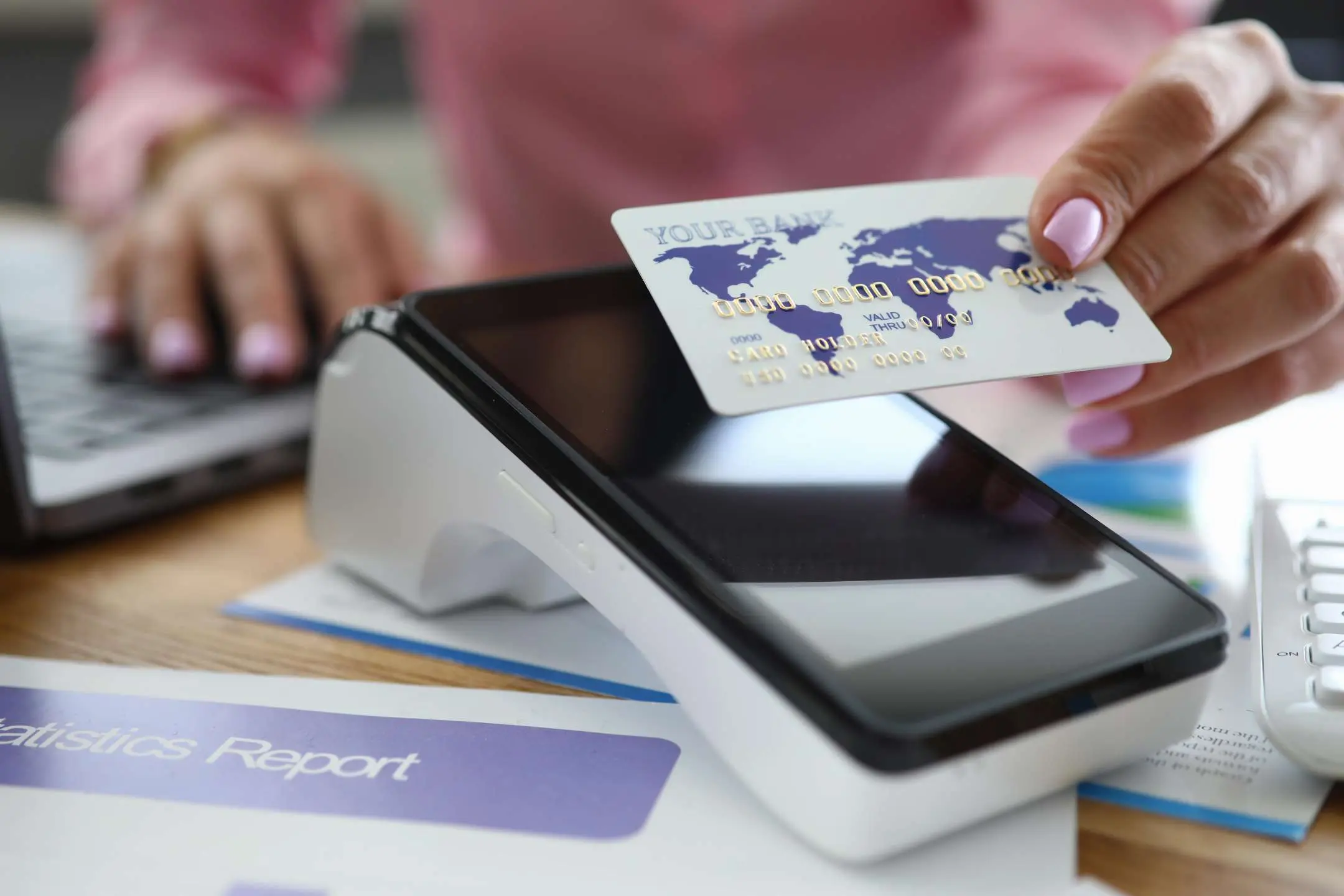In today’s world, every store needs Point of Sale (POS) software. This technology has evolved over the last few decades, powered by computers and data, from the basic cash register into a comprehensive suite of business solutions.
With faster internet connections, businesses began using ePOS systems due to their convenience and lowered costs. And the advent of cloud-based POS systems enabled any device with an internet connection to be used as a POS terminal.
POS systems now streamline sales operations, enhance inventory management, provide comprehensive sales reporting, facilitate customer relationship management, and offer integration capabilities with other essential business tools.
This article will help you understand how this technology can optimise your business operations, improve customer experience, and drive growth.
What is a POS system?
A Point of Sale (POS) system combines hardware and software that enables businesses to process transactions and manage sales-related activities efficiently. It is a central hub for completing sales transactions, tracking inventory, and generating valuable insights.
Types of POS systems
POS systems come in various forms, each catering to different business needs. Let’s take a closer look at some common types of POS systems:

Cloud-Based POS systems operate on cloud-based servers, allowing businesses to access their data anywhere with an Internet connection. They are scalable, affordable, and offer real-time updates, making them popular among small and medium-sized businesses. One drawback of cloud-based POS systems is the potential risk of data breaches or security vulnerabilities, as sensitive business and customer information is stored in the cloud.

Tablet-Based POS systems leverage the power of mobile devices, such as tablets or smartphones, to process transactions and manage sales. These systems are compact, portable, and offer flexibility in terms of mobility within the business premises. Some drawbacks of tablet-based POS systems are their reliance on stable internet connectivity for seamless operations and vulnerability to physical damage or theft due to their portable nature.

Traditional POS systems combine hardware components, such as cash registers, receipt printers, barcode scanners, credit card terminals, and software specifically designed for managing sales and inventory. While not as technologically advanced as cloud-based or tablet-based systems, traditional POS systems are reliable and widely used.
Hardware components of a POS system
A POS system comprises several essential types of POS hardware that work together to facilitate seamless transactions. These components include:
The POS terminal
A hardware device used with point-of-sale software to process transactions and complete sales. It typically consists of a computer or tablet with specialised POS software and peripheral devices such as a cash register, barcode scanner, receipt printer, and credit card terminal.
Cash register
The central hub of a POS system, the cash register, allows for secure cash handling, calculation of sales totals, and printing receipts.
Barcode scanner
Barcode scanners read barcodes, making the checkout process faster and more accurate. They automatically retrieve product information from the inventory database.
Receipt printer
These produce detailed receipts for customers, including the itemised list of purchased products, the payment method, and store information.
Card readers
They enable businesses to process credit and debit card payments securely, ensuring a smooth and convenient checkout experience for customers. Card readers are crucial in facilitating cashless transactions, ensuring secure and efficient payment processing at point-of-sale locations.
Display monitor
The display monitor shows the transaction details, item prices, and any additional information necessary for both the cashier and customer.
Software components of a POS system
The software component of a POS system is the brain behind its functionality and comprises:
Inventory management
Allows businesses to track and manage their inventory levels in real-time, ensuring stock availability and preventing stockouts.
Customer relationship management (CRM)
The CRM software enables businesses to collect and analyse customer data, track purchase history, and provide personalised customer experiences, improving customer satisfaction and loyalty.
Reporting and analytics
POS systems generate comprehensive reports that provide valuable insights into sales performance, inventory turnover, customer behaviour, and more. This information empowers businesses to make data-driven decisions and identify areas for improvement.
Point-of-sale software
The core of the system, point-of-sale software manages sales transactions, tracks inventory, generates reports, and provides a user-friendly interface for cashiers.
Benefits of using a POS system
Increased efficiency
A POS system automates and streamlines the sales process, allowing cashiers to process transactions swiftly and accurately. The system reduces manual errors and minimises the time required for each transaction leading to faster checkout times, shorter queues, and improved overall customer experience.
Improved inventory management
POS real-time inventory tracking enables businesses to monitor stock levels, track product movements, and identify popular items. This information helps optimise inventory management by ensuring sufficient stock availability, preventing stockouts, and minimising overstocking.
Better customer service
Using a modern POS system, cashiers can access customer details, preferences, and previous purchases, allowing for personalised interactions and recommendations and building stronger customer relationships.
More accurate sales reporting
A POS system generates comprehensive sales reports that provide valuable insights into sales performance, trends, and patterns. By analysing this data, businesses can identify top-selling products, evaluate marketing campaigns, and make data-driven decisions to improve overall performance.
Reduced human error
Manual processes are prone to human error, leading to inaccuracies in transactions, inventory management, and sales reporting. With a POS system, calculations, pricing, and inventory updates are automated, significantly reducing the risk of errors caused by manual data entry.
Choosing the right POS system for your business
When choosing the right POS system for your business, partnering with the right provider is crucial. Consider factors such as the provider’s industry experience, reputation, customer support, and solution scalability. Look for a provider that understands the specific needs of your business, offers a customisable solution to meet those needs, and provides reliable technical support and training.
Let us help you choose the right POS software smartly – our modern POS solution offers constant connectivity, portability, advanced reporting, and support for the latest payment methods.
Our POS system is designed to have all the payment flexibility your customers’ demand and all the connectivity your staff need to take payments anywhere seamlessly.
Let’s talk – our expertise is just a click away.





